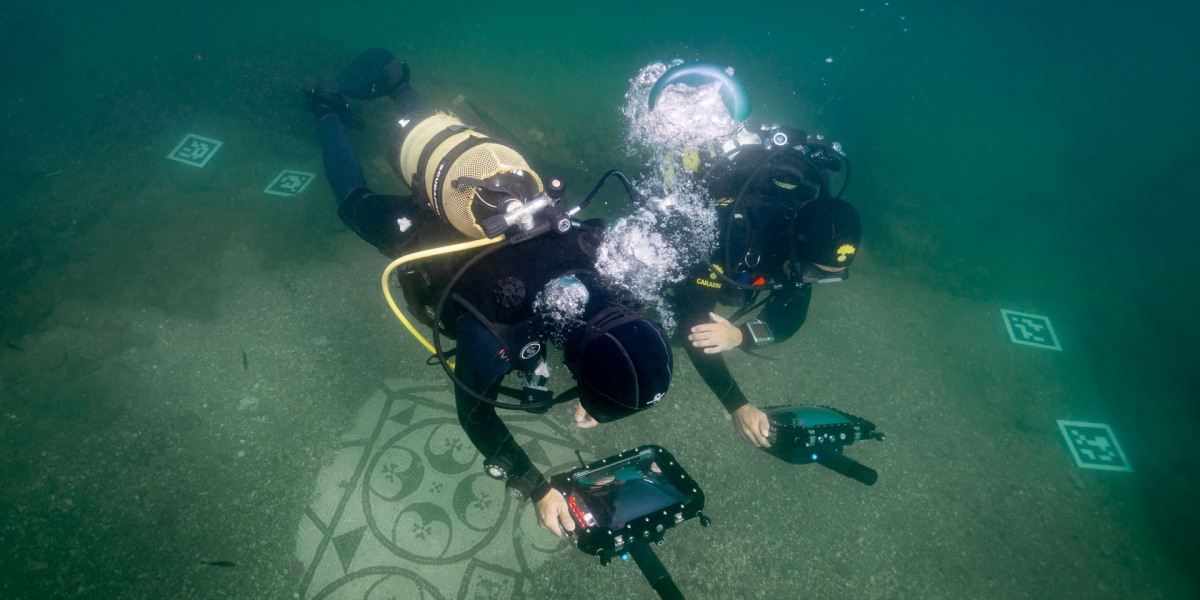
Cabled systems are the most reliable, but they are difficult to maintain and cover a limited operational area. And wireless internet doesn’t work well in water, because of the way water interacts with electromagnetic waves. Scientists have tried optic and acoustic waves, but light and sound aren’t efficient forms of wireless underwater communication—water temperature, salinity, waves, and noise can alter signals as they travel between devices.
So Davidde teamed up with a group of engineers led by Chiara Petrioli, a professor at Sapienza University and director of Sapienza’s spinoff WSense, a startup specializing in underwater monitoring and communication systems. Petrioli’s team has developed a network of acoustic modems and underwater wireless sensors capable of gathering environmental data and transmitting it to land in real time. “We can now monitor the site remotely and at any time,” says Davidde.
Their system relies on AI algorithms to constantly change the network protocol. As the sea conditions change, the algorithms modify the information path from one node to the other, allowing the signal to travel up to two kilometers. The system can send data between transmitters one kilometer apart at a kilobit per second and reaches tens of megabits per second over shorter distances, explains Petrioli. This bandwidth is enough to transmit environmental data collected by sensors anchored to the seafloor, such as images and information on water quality, pressure, and temperature; metal, chemical, and biological elements; and noise, currents, waves, and tides.
At Baiae, underwater internet allows remote, continuous monitoring of environmental conditions such as pH and carbon dioxide levels, which can influence the growth of microorganisms that could disfigure the artifacts. In addition, it allows divers to communicate with one another and with colleagues above the surface, who can also use the technology to locate them with a high degree of accuracy.






